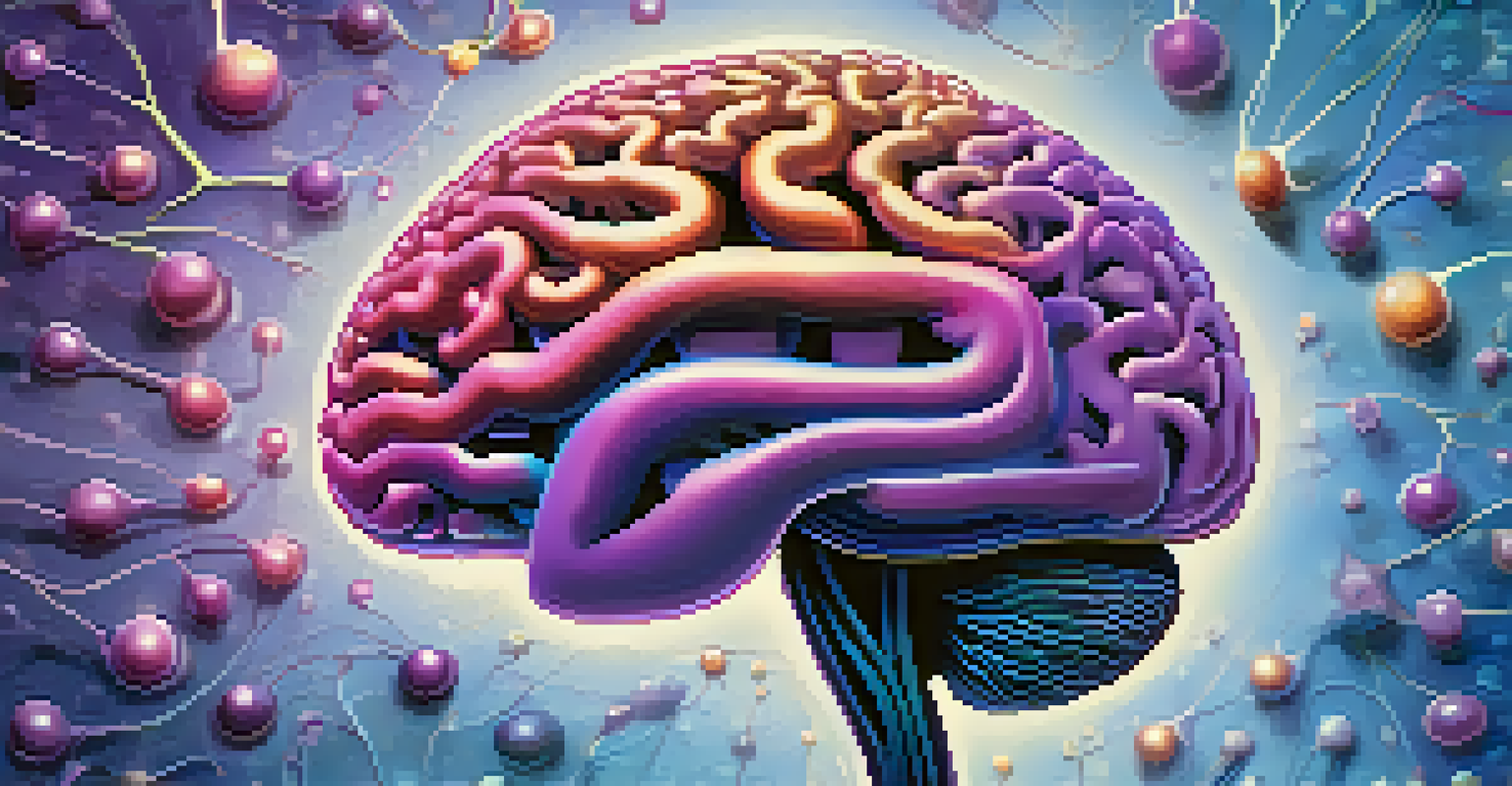Entheogens and Pain: Research on Their Therapeutic Potential

What Are Entheogens and Their Historical Use?
Entheogens are substances, often derived from plants, that have been used for centuries in various cultures for spiritual and healing purposes. These compounds, which include psychedelics like psilocybin and mescaline, induce altered states of consciousness. Historically, they have been integral to rituals, helping individuals connect with deeper aspects of their psyche.
Psychedelics can offer experiences that are profoundly healing and transformative, allowing individuals to confront their pain in a new light.
In many indigenous cultures, entheogens were believed to facilitate communication with the divine or provide insights into personal struggles. For example, ayahuasca is used in Amazonian shamanic practices to heal both physical and emotional ailments. This historical context highlights the long-standing recognition of their potential therapeutic benefits.
Today, as modern medicine increasingly looks to alternative therapies, entheogens are gaining attention for their possible roles in pain management and psychological healing. Research into their effects is expanding, shedding light on how these substances might offer relief for various conditions.
The Science Behind Entheogens and Pain Relief
Recent studies suggest that entheogens may alter brain chemistry in ways that can alleviate pain. For instance, compounds like psilocybin have been shown to interact with serotonin receptors, which play a crucial role in mood regulation and pain perception. This interaction may help create a more favorable environment for pain relief.

Moreover, these substances can promote neuroplasticity, the brain's ability to adapt and reorganize itself. This means that entheogens might not only help manage pain but also foster long-term changes in how the brain processes pain signals. Such findings could revolutionize treatment approaches for chronic pain conditions.
Entheogens Aid Pain Relief
Research shows that entheogens like psilocybin can alter brain chemistry to alleviate pain and promote neuroplasticity.
By understanding the biological mechanisms at play, researchers are beginning to explore how entheogens can complement traditional pain management strategies. This integration could lead to more holistic treatment options that address both physical and emotional aspects of pain.
Clinical Trials: Current Research on Entheogens
As interest in entheogens grows, numerous clinical trials are underway to assess their safety and efficacy for pain management. For example, studies involving psilocybin for chronic pain conditions like fibromyalgia have shown promising results, with participants reporting significant reductions in pain levels. These trials often focus on understanding the dosage, method of administration, and long-term impacts.
The use of entheogens in a therapeutic context can help individuals access parts of their psyche that are often hidden, leading to insights that can alleviate suffering.
Additionally, MDMA, another entheogen, is being studied for its potential to help with post-traumatic stress disorder (PTSD), which can be closely tied to chronic pain. The findings from these studies could pave the way for new, effective treatment protocols that incorporate entheogens into therapeutic practices.
The ongoing research is crucial as it not only seeks to validate traditional knowledge but also aims to establish a scientific foundation for the use of entheogens in modern medicine. This blend of ancient wisdom and contemporary science holds great promise for future pain management strategies.
Potential Risks and Ethical Considerations
While the therapeutic potential of entheogens is exciting, it's essential to consider the potential risks involved. These substances can lead to intense psychological experiences, which might not be suitable for everyone, especially those with certain mental health conditions. Therefore, proper screening and controlled environments are vital in clinical settings to ensure patient safety.
Ethical considerations also arise regarding the use of entheogens, particularly in how they are sourced and administered. Many of these substances come from indigenous traditions, raising questions about cultural appropriation and the rights of those communities. Respecting and acknowledging these traditions is crucial as research progresses.
Clinical Trials Show Promise
Ongoing clinical trials indicate that entheogens may be effective in managing chronic pain and conditions like PTSD.
Additionally, the stigma surrounding entheogens can affect public perception and acceptance of their therapeutic use. Education and awareness are paramount to dispelling myths and fostering an understanding of their potential benefits and risks.
Personal Stories: Healing Through Entheogens
Many individuals have shared transformative experiences with entheogens, particularly in relation to pain relief. One such story is that of a chronic pain sufferer who turned to psilocybin therapy after traditional treatments failed. After a guided session, they reported not only a reduction in pain but also a newfound perspective on their condition, highlighting the mind-body connection.
These personal narratives often emphasize how entheogens can facilitate emotional release and provide insights into underlying issues contributing to pain. For some, the experience is akin to a reset button, allowing them to approach their pain from a different angle. Such stories can serve as powerful testaments to the potential of these substances.
While scientific research is crucial, these anecdotal accounts play an equally important role in understanding the full scope of entheogens' effects. They offer a glimpse into the profound changes that can occur when individuals engage with these substances in a supportive and intentional manner.
Integrating Entheogens into Modern Medicine
As research continues to unveil the therapeutic benefits of entheogens, the conversation about their integration into modern medicine is becoming more prominent. Healthcare professionals are exploring how these substances can complement existing treatment modalities for pain management. This integration could lead to more personalized and effective care for patients.
Training for healthcare providers will be essential in this transition, ensuring they understand the complexities of working with entheogens safely and effectively. This includes knowledge about appropriate dosages, potential interactions with other medications, and the importance of a supportive therapeutic environment.
Ethical Use and Cultural Respect
The use of entheogens raises ethical considerations regarding their sourcing and the need to respect indigenous traditions.
Furthermore, as regulations evolve, there is potential for entheogens to become more accessible to those struggling with chronic pain. Advocacy for responsible use and further research will be key in shaping the future of entheogens in healthcare.
The Future of Entheogens in Pain Management
Looking ahead, the future of entheogens in pain management appears promising yet complex. As more studies emerge, we can anticipate a shift in how these substances are perceived within both the medical community and society at large. This shift could lead to more widespread acceptance and utilization of entheogens as viable treatment options.
However, challenges remain, including navigating regulatory frameworks and addressing ethical concerns. The balance between innovation and responsibility will be crucial as researchers and practitioners work together to develop safe and effective treatment protocols.

Ultimately, the integration of entheogens into pain management could signify a broader movement toward holistic healthcare approaches that honor both the mind and body. With continued research and open dialogue, we may witness a transformative era in pain relief that embraces the wisdom of the past while looking forward to the future.